S.T.A.L.K.E.R.: Shadow of Chernobyl Hands-On Preview
We travel to Kiev to get hands-on with GSC Game World's Chernobyl-themed first-person shooter.
Earlier this year, GameSpot was invited to visit GSC Game World in Kiev, Ukraine. GSC is best known for its Cossacks series of real-time strategy games, but come the end of this year, that is unlikely to be the case. The reason? S.T.A.L.K.E.R.: Shadow of Chernobyl, the developer's second attempt at a first-person shooter (the first was Codename: Outbreak) will be released. It's a game that, if the hype is to be believed, will deliver a single-player experience as immersive and engaging as anything on the market. Details of the game's multiplayer capabilities are being kept under wraps until E3, but we're happy to report that our visit to the former Soviet Union (to be one of the first people in the world to get hands-on time with the single-player game) was well worth the time and effort.
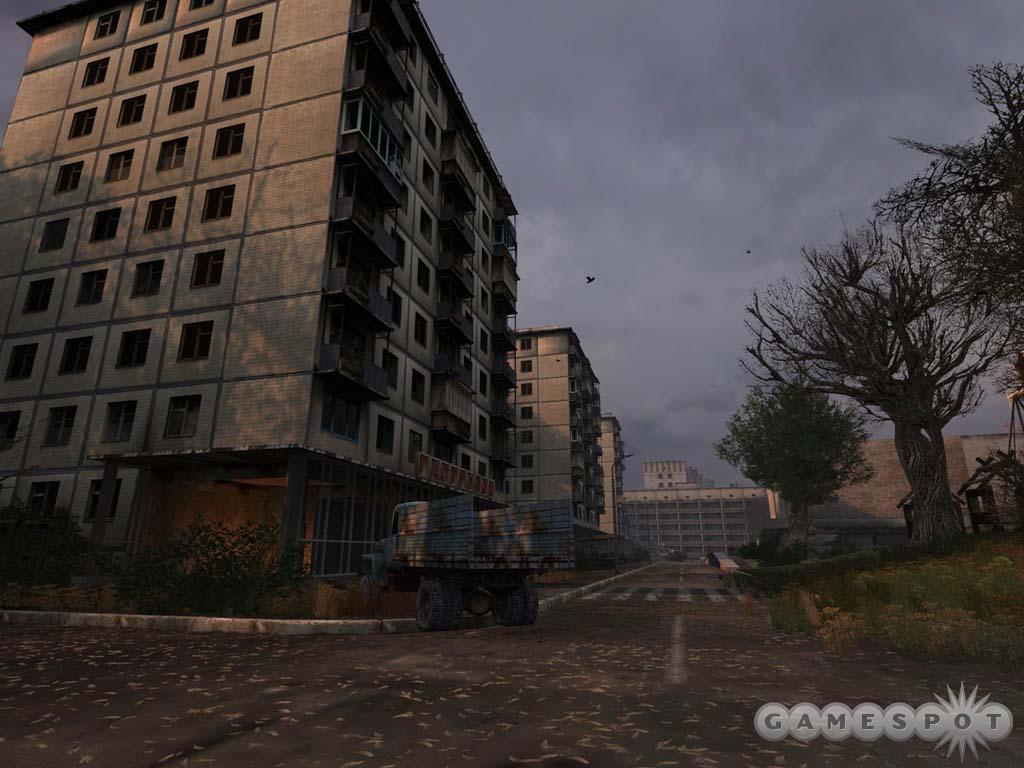
Housed in a large gulaglike building with dimly lit corridors, floor-to-ceiling cold surfaces, and receptionists who wear camouflage clothing, the GSC office is an oasis of wooden floors and tasteful decor. The office is only a one-hour drive from Chernobyl, so perhaps it's not surprising that the site of the world's worst man-made disaster was chosen as the setting for the game. A number of the developers at GSC have friends or family who were affected by the Chernobyl explosion back in 1986, so they are anxious to create a game that not only entertains and immerses players but also serves as both a reminder of what happened and a warning so that the same thing will never be allowed to happen again.
Despite its somewhat fantastical premise, realism is definitely the order of the day in S.T.A.L.K.E.R. The gameworld, which spans some 30 square kilometers, has been painstakingly re-created using thousands of photographs taken during the developers' visit to the "Chernobyl zone." Needless to say, it is quite different from any world that we've explored in a first-person shooter to date. GSC has employed a little artistic license in moving the zone's key landmarks a little closer together and in making the terrain in between more interesting and varied. However, the world you're presented with in S.T.A.L.K.E.R. is wholly believable as a man-made environment that is slowly succumbing to and being reclaimed by the forces of nature. Since we visited the exclusion zone at Chernobyl, we can also report that the game is as close as many of you are likely to (or would want to) get to the doomed nuclear power plant. A former safety officer from the plant, who has been in regular contact with GSC, even told us that he was able to find his old office while playing an early version of the game. It's not just the graphics that make the gameworld seem realistic either, because the game boasts a physics engine that's right up there with what we've seen of Half-Life 2. The environment itself is inhabited by all manner of unnatural creatures and non-player characters that go about their business regardless of whether you happen to be close by.
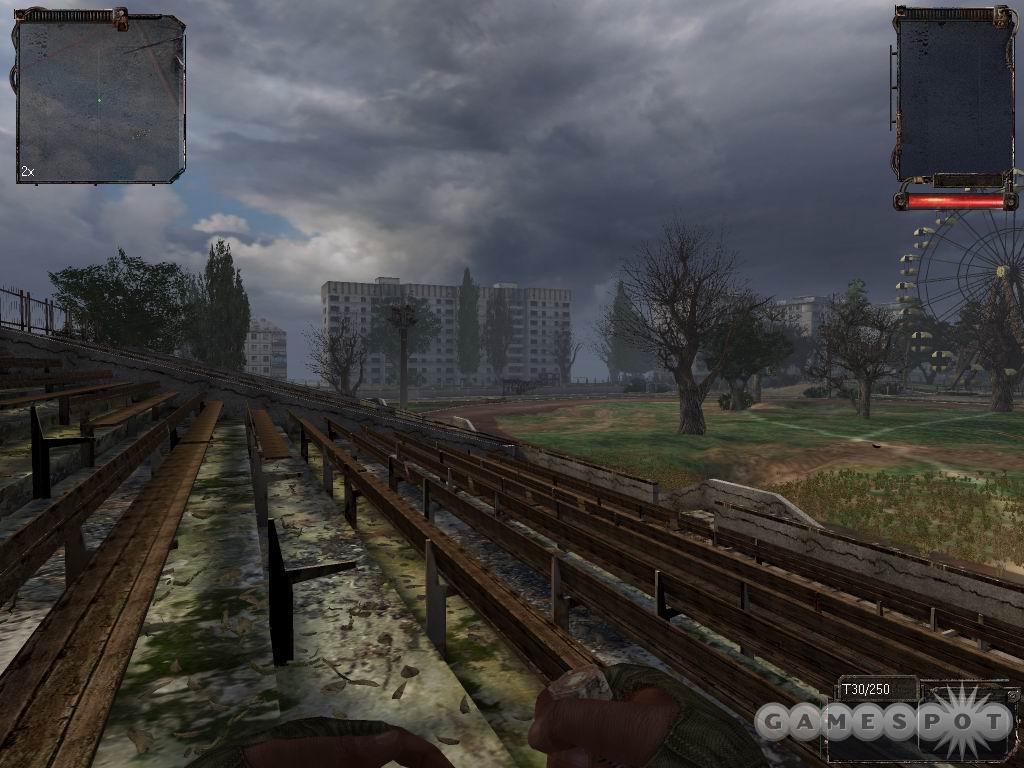
Eager to show off the game's physics, GSC allowed us to get hands-on with S.T.A.L.K.E.R. in the confines of a physics test level. The level comprised nothing more than a room filled with weapons and destructible objects, but you'd be amazed at the number of things we found to amuse ourselves with. Light sources were plentiful in the physics test room, and while shooting out the bulbs Splinter Cell-style is sure to prove useful in the game on occasion, it's also possible to make light fixtures swing wildly from the ceiling, which results in an impressive display of real-time shadows. Other objects in the room included barrels, crates, furniture, doors, heavy pipes, and television sets. Armed with a pistol, a shotgun, a machine gun, and a handful of grenades, we set out to rearrange the room. As a result, piles of barrels were scattered by grenades, wooden doors were reduced to splinters, and heavy doors swung open but remained intact after we tried the shotgun. Additionally, chairs and tables were reduced to firewood once we started shooting the legs off of them with an AK-74. The list goes on, but all you really need to know is that every object in the room behaved exactly as we expected it to, so many game objects were destructible. The lone exception to the rule involves the game's barrels, which appear to be indestructible. In fact, they don't even get dented from falls to the ground after they are thrown into the air by the force of an explosion.
A Dangerous Business
After familiarizing ourselves with the game's controls in the test room, we were allowed to spend some time with a specially prepared single-player demo comprising a single mission set in one of the game's 18 distinct areas. The code we were playing was a little unstable, but since the multiple restarts we endured were never the same twice, the problems actually served to show off just how much replay value the game will offer as a result of its "real-life" AI. The start of the level saw us inside an abandoned building conversing with an injured colleague who, while we picked up the various weapons and ammo boxes on the floor close to him, told us that he'd seen a rival stalker carrying a valuable artifact fall from a bridge after he was attacked by mutant animals. The stalker's last known location was added to our map, and we were told that we should retrieve the artifact from him and then proceed north to meet with a dealer who would buy it from us. After leaving the building, we never found ourselves in the same situation twice. The first time our mission got under way, the whole area seemed to be deserted, but on other occasions, we quickly found ourselves confronted by mutant animals (with glowing eyes), wild dogs, or rival stalkers. On one occasion, we'd barely finished picking up all of the available weapons and ammo when we saw a rival stalker in the doorway getting mauled to death by mutant animals. This same level of unpredictability is present throughout the game, not only because the majority of the missions are randomly generated but because life goes on in the gameworld as usual, regardless of whether events might interfere with your goals.

The stalker we were going after in the demo mission (the first time we played) stood near a small building that was next to a railway line. Because of the open nature of the gameworld, we were free to approach him from any direction we chose, although our movements were invariably influenced by potentially dangerous animals in the vicinity. Every time we played the level up to this point--which we did on at least 10 occasions--the experience was very different. The artifact could always be found in roughly the same spot, but the enemy stalker had to contend with animals in exactly the same way that we did. Apparently, he failed to do so on one occasion when, from our vantage point on a nearby bridge, we saw his corpse being dragged away by three animals. The danger of allowing events such as this to transpire is that some of your mission objectives can effectively be achieved or negated without you. GSC isn't worried about this, though, and has actually stated on more than one occasion that it will be possible for non-player stalkers to beat you to the best of the game's eight different endings.
One of the THQ representatives who accompanied us to the GSC offices told us that he'd once completed the demo level without encountering a single enemy--other than the stalker from which he took the artifact. This highlights the fact that the gameplay is not only different every time you play but can also vary greatly in terms of its difficulty. There's no danger of you being able to simply walk between your objectives without fear though, because the threat from the "invisible enemy" (that is, radiation) is ever-present in the form of what GSC refers to as "anomalies." Most of the anomalies we encountered appeared in the form of barely visible clouds that weren't too difficult to sidestep, whereas others really were invisible and most likely would have killed us or would have at least wounded us if it weren't for our Aliens-style proximity detector, which beeped more and more rapidly as we approached them (or as they approached us).
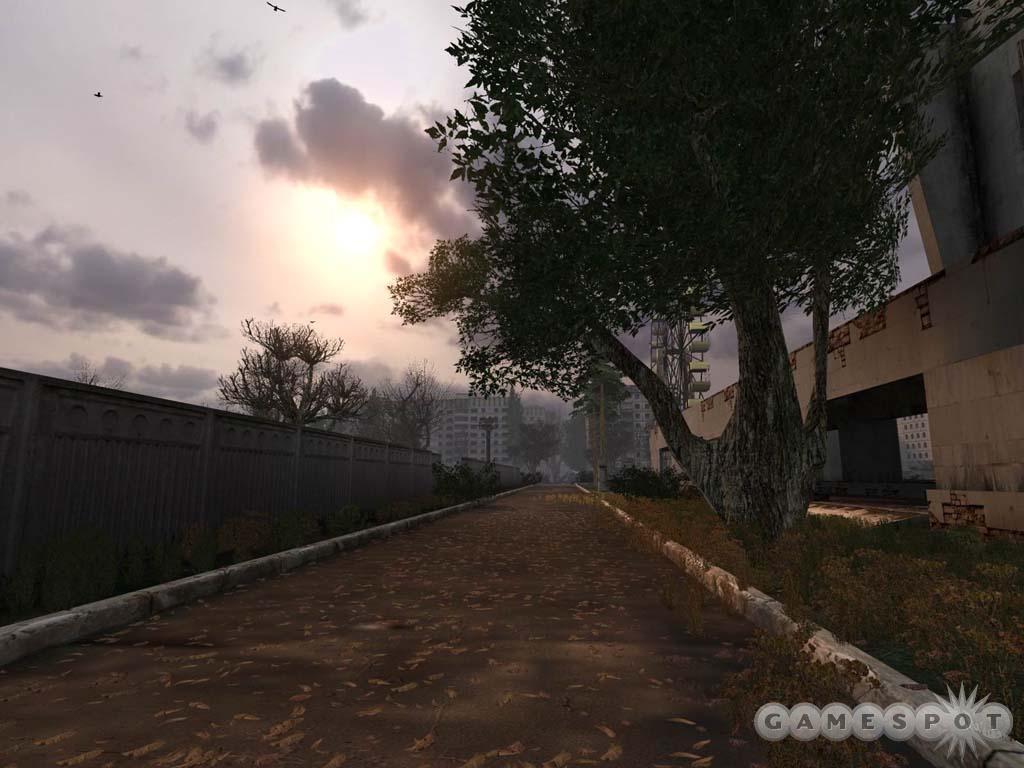
The only way to negotiate invisible anomalies in the game is to throw nuts and bolts in the direction you wish to move. If they are thrown into the air and disintegrate on impact, you should look for another way. If they don't, you can proceed. The anomaly mechanic is in keeping with the game's setting, and it definitely helps to make the game interesting when there are no conventional enemies around. However, it seems a little overused. Anomalies that prove fatal the moment you step into them can also seem unnecessarily harsh if you don't have time to stop. For example, you might not have time to chuck nuts and bolts all over the place if you are frantically running from and attempting to shoot at a pack of wild dogs. If you are killed in the game, though, you'll be returned to your last save point, which you can generate every few minutes on the game's easiest setting. However, these save points are scarce and are generated automatically on the difficult setting.
Surviving Ground Zero
If you don't want to be killed, you'll not only need to keep your eye on a health bar but also on bars representing your food, endurance, and radioactivity levels. Each of these bars is capable of affecting others in some way. So, for example, if you're hungry, you'll lose endurance, which affects your aim and your ability to run (at least until you sleep). Eating the remains of a contaminated animal, though, will make you a little more radioactive and may even be detrimental to your health. Health packs and nonradioactive food will be the primary ways for you to regain health, although, as mentioned, sleep will also play a part. You'll be able to sleep at any point, but you'll want to find somewhere safe to put your head down if you're hoping for anything more than a quick nap. When you sleep, the screen will fade to black, but time will not stand still in the world around you. If you've failed to find somewhere safe and an enemy stumbles across you, you'll be prematurely awakened and will have to deal with whatever it is that has disturbed your slumber. The day-and-night cycle in the game, which currently lasts for approximately three hours, will have no bearing on your ability to sleep, although we're told that many of the monsters in the zone will become more active at night.
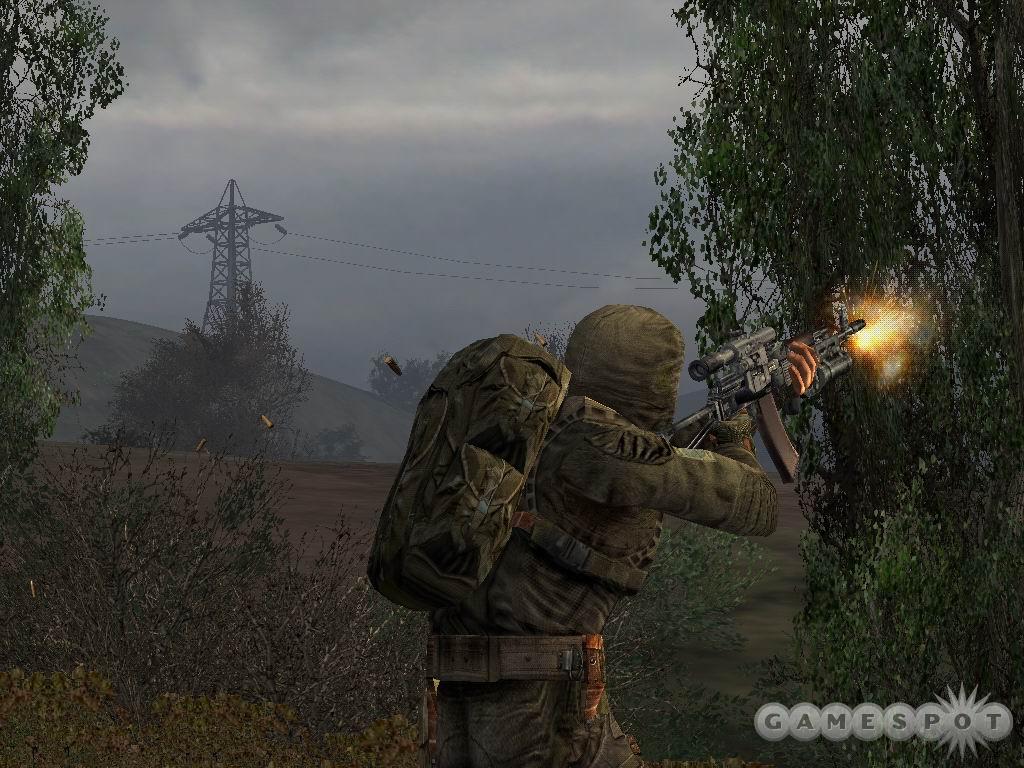
Making sure your weapons are easily accessible before going to sleep is definitely recommended. The game employs a role-playing-style inventory system whereby you have a limited number of boxes or slots that can be filled with items, many of which will occupy multiple spaces. Items that you're using currently or plan to use imminently will need to be placed on your person or in the limited spaces on your belt, while other items can be placed in a large backpack. Items in the backpack cannot be used until they are moved, so you'll want to check on the status of your inventory regularly to be sure that you're not left fumbling for ammo in the middle of a fight.
Given the survival nature of S.T.A.L.K.E.R., the fact that we were only able to play a single, brief mission inevitably means that we've still not seen a lot of what the game has to offer. Vehicles will be featured in many areas, weapons will deteriorate over time, and we're told that your actions in the game will earn you a reputation that determines how other stalkers and guilds react to you. There are also a number of features that--even at this relatively late stage of development--are being considered for inclusion. Vodka and night vision are two that immediately spring to mind. Vodka, it's believed by many, kills off radiation in the body, so it will perform a similar function in the game. Night vision would certainly be a welcome alternative to the head-mounted flashlights that are currently in place as well--particularly given that many of the zone's most deadly monsters like to feed under cover of darkness.
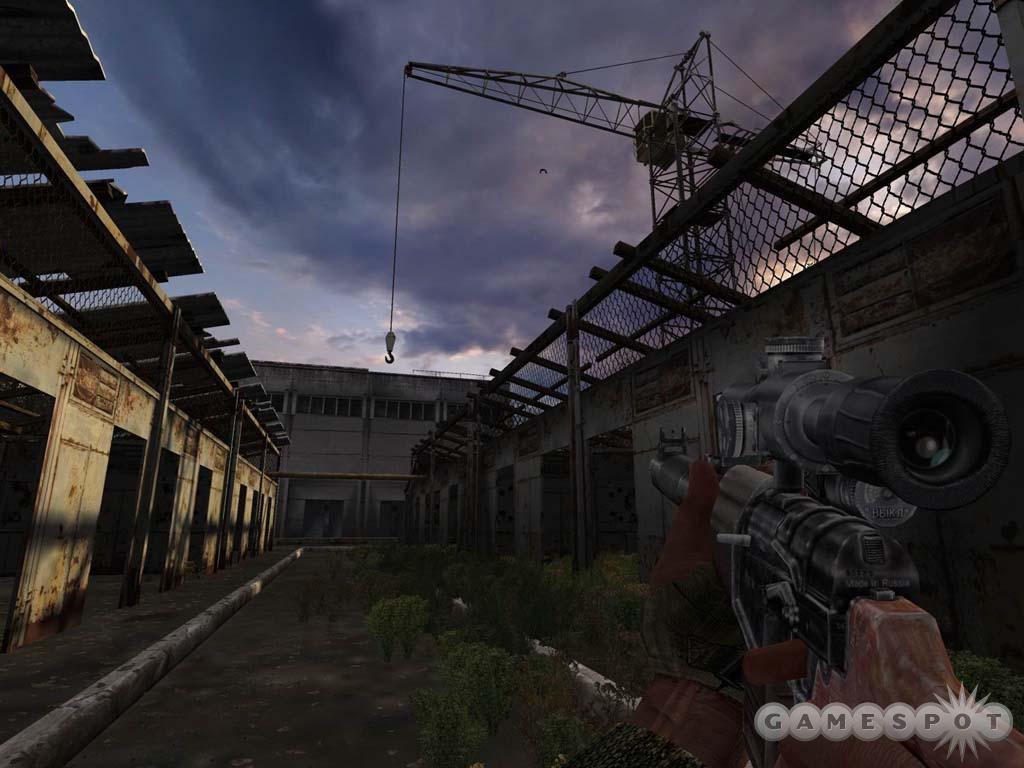
On the whole, we came back from Kiev feeling very impressed with what we saw of S.T.A.L.K.E.R., although there were one or two areas that, hopefully, GSC can address. The AI of the enemies in the game is impressive at times, but enemies occasionally forget about you in combat. Also, a few visuals seemed unnecessarily repetitive, with distinct patterns of leaves, twigs, and other debris on the roads quite clearly being replicated every few steps. Nevertheless, S.T.A.L.K.E.R.: Shadow of Chernobyl is a game that we're very much looking forward to spending more time with in the future. The game should ship later this year.
Got a news tip or want to contact us directly? Email news@gamespot.com
Join the conversation